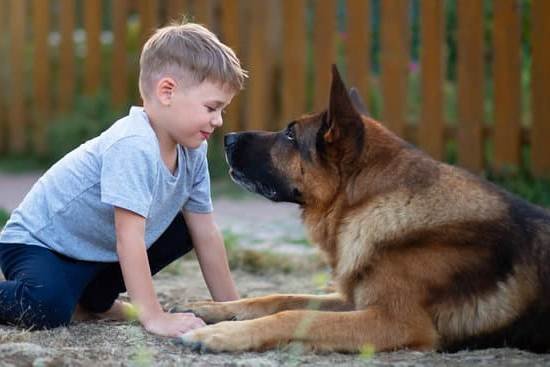Therapy dogs play a crucial role in providing comfort, support, and companionship to individuals in various settings. The process of therapy dog training involves specific techniques and requirements to ensure that these dogs are well-prepared for their responsibilities. From hospitals to nursing homes and schools, therapy dogs have made a positive impact on the emotional and mental well-being of many individuals.
The benefits of therapy dogs are vast, as they can help improve emotional and mental well-being in numerous ways. Whether it’s offering companionship to patients in hospitals or providing stress relief to students in schools, therapy dogs have proven to be effective in uplifting spirits and reducing anxiety. In this article, we will explore the importance of therapy dog training and how these specially trained canines contribute to the overall well-being of those they interact with.
Choosing the right dog for therapy work is an essential part of therapy dog training. It involves selecting a breed with suitable temperament and behavior that is conducive to providing comfort and support. In addition, understanding the training requirements for therapy dogs is crucial for their success in public settings. This includes obedience training, socialization skills, and the ability to exhibit good behavior when interacting with people.
The Process of Choosing the Right Dog for Therapy Work
When it comes to choosing the right dog for therapy work, there are several important factors to consider. One of the key considerations is the breed of the dog. While any breed can potentially become a therapy dog, certain breeds are known for their friendly and gentle nature, making them well-suited for this type of work.
Breeds such as Golden Retrievers, Labrador Retrievers, and Standard Poodles are often popular choices due to their calm and sociable temperament. It’s essential to select a breed that is known for being patient, comfortable around new people and environments, and generally easy to train.
In addition to breed characteristics, the individual dog’s temperament is also crucial in determining its suitability for therapy work. Dogs that are confident, calm, and good-natured tend to excel in these roles. It’s important to assess a potential therapy dog’s behavior around various stimuli, including loud noises, crowded spaces, and interactions with unfamiliar individuals. Additionally, a therapy dog should be comfortable being touched and handled by different people in a gentle manner.
Once the appropriate breed and temperament have been identified, it’s essential to focus on socialization and obedience training. Socialization plays a vital role in ensuring that a therapy dog is comfortable and at ease in different environments and around various types of people.
Obedience training is equally important as it helps the dog respond reliably to commands from its handler while maintaining appropriate behavior during therapy sessions. Seeking professional guidance from certified trainers experienced in therapy dog training can be immensely beneficial in this process.
Ultimately, selecting the right dog for therapy work involves careful consideration of both breed characteristics and individual temperament. By focusing on socialization and obedience training early on, owners can set their dogs up for success in becoming certified therapy dogs that make a positive impact on those they interact with.
Understanding the Training Requirements for Therapy Dogs
Therapy dogs play a vital role in improving the emotional and mental well-being of individuals in various settings, including hospitals, nursing homes, and schools. These specially trained dogs provide comfort, support, and companionship to those in need, helping to reduce stress, anxiety, and feelings of loneliness.
Their presence has been shown to have a positive impact on both physical and mental health, making them valuable members of therapy programs. Whether it’s simply providing affection or engaging in interactive activities, therapy dogs have the ability to brighten the day of those they visit.
When it comes to selecting a dog for therapy work, it is important to consider specific breeds and temperaments that are suitable for this type of training. Some breeds are naturally more inclined towards being calm, gentle, and sociable, making them ideal candidates for therapy work.
Additionally, a dog’s behavior, socialization, and obedience are crucial factors to consider when choosing a potential therapy dog. These traits contribute to the dog’s ability to interact with various individuals in different environments while remaining well-behaved and responsive to commands.
In order for a dog to become a certified therapy dog, specific training requirements must be met. Obedience training is essential as it helps ensure that the dog can reliably respond to commands from their handler in any setting. Socialization is also key as therapy dogs need to be comfortable and confident when interacting with different people and other animals.
Good behavior in public settings is another important aspect of therapy dog training as they are often exposed to numerous distractions while working. With proper training and certification requirements fulfilled, therapy dogs are equipped to provide much-needed support and comfort to those who can benefit from their presence.
- Choose breeds with calm and gentle temperaments
- Consider a dog’s behavior, socialization,and obedience
- Obedience training ensures reliability in following commands
- Socialization helps the dog feel comfortable around different individuals
- Good behavior in public settings is crucial for successful interactions
The Role of Handlers in Therapy Dog Training
Handlers working with therapy dogs are required to undergo specific training and certification processes themselves. This typically includes education on animal behavior, understanding canine body language, learning effective handling techniques, and being knowledgeable about the guidelines and regulations for therapy dog work. Additionally, handlers must demonstrate their ability to effectively manage and control a therapy dog in public settings, ensuring the safety and comfort of both the dog and those they interact with.
It’s important for handlers to establish a strong bond with their therapy dogs through positive reinforcement training methods. Building trust and a strong connection with the dog enables the handler to effectively communicate with the animal during therapy sessions or when providing support in different environments. Handlers also need to be aware of their own behaviors and reactions as they can influence how the therapy dog responds to various situations.
| Therapy Dog Handler Responsibilities | Training and Certification Requirements |
|---|---|
| Overseeing training and socialization | Education on animal behavior |
| Maintaining overall health and behavior | Understanding canine body language |
| Establishing a strong bond through positive reinforcement | Learning effective handling techniques |
Therapy Dog Training Techniques
Positive Reinforcement Training
One of the most widely used techniques in therapy dog training is positive reinforcement. This method involves rewarding desired behaviors with treats, praise, or toys, thereby encouraging the dog to repeat those behaviors. Positive reinforcement helps create a strong bond between the handler and the dog, as well as promoting a positive attitude towards training sessions.
Desensitization and Socialization
Another important aspect of therapy dog training is desensitization and socialization. Exposing the dog to various environments, sounds, and smells helps them become more comfortable and confident in different settings. Socialization also involves introducing the dog to different people, including children, elderly individuals, and those with disabilities, so they can learn to interact calmly and appropriately with everyone they may encounter during their therapy work.
Specialized Commands for Therapy Settings
In addition to basic obedience commands such as sit, stay, and come, therapy dogs need to learn specialized commands that are relevant to their role in therapy settings. These commands may include “visit” (approach a person gently), “lap” (rest head or paws on someone’s lap), or “gentle” (be extra careful when interacting with a person). Training these specific commands is crucial for ensuring that therapy dogs can provide comfort while maintaining good manners.
By utilizing these training techniques along with patience, consistency, and dedication from both handlers and dogs, successful therapy dog training can result in well-prepared canine companions ready to provide valuable emotional support to those in need.
Public Access Training for Therapy Dogs
Therapy dog training goes beyond just teaching a dog basic obedience skills. It also involves public access training to ensure that therapy dogs can behave appropriately in various settings. This type of training is essential for therapy dogs as they need to interact with different people and negotiate different environments as part of their work. Here are some key aspects of public access training for therapy dogs:
- Desensitization to stimuli: Therapy dogs need to be desensitized to various stimuli they may encounter in public settings, such as loud noises, crowds, and different types of flooring. This training helps them feel comfortable and confident in any environment they may visit during their therapy work.
- Obedience commands in public: In addition to basic obedience training, therapy dogs need to learn specific commands and cues that are useful in public settings. This includes commands for sit-stay, down-stay, heel, and leave it, among others.
- Proper behavior around people: Public access training focuses on teaching therapy dogs how to behave around people of all ages and abilities. This includes not jumping on people, remaining calm and gentle when interacting with individuals, and being comfortable with strangers approaching them.
Overall, public access training is crucial for therapy dogs to effectively carry out their work in hospitals, nursing homes, schools, and other facilities. It ensures that these canine companions can provide comfort and support while maintaining good manners and appropriate behavior in any setting they may encounter during their therapy visits.
Evaluating and Testing Therapy Dogs
Therapy dog training is a rigorous process that requires careful evaluation and testing to ensure that the dogs are well-suited for their important work. The evaluation and testing process for therapy dog certification involves assessing a dog’s temperament, behavior, obedience, and ability to interact with people in a variety of settings.
Potential therapy dogs undergo thorough assessments to determine their suitability for working in environments such as hospitals, nursing homes, schools, and other facilities where their support can be beneficial.
During the evaluation process, dogs are observed for their ability to remain calm and gentle in different situations. They are assessed on their willingness to be touched, petted, or handled by unfamiliar individuals, as well as their reactions to loud noises or sudden movements. Additionally, evaluators look for signs of anxiety or aggression that may indicate a dog is not well-suited for therapy work.
Once a dog has passed the initial evaluation, they may then move on to specific testing designed to evaluate their response to basic commands and cues from their handler. This phase of testing helps assess the dog’s obedience and reliability in following instructions from their handler in various scenarios they may encounter during therapy visits.
Overall, the evaluation and testing process plays a crucial role in ensuring that only well-trained and temperamentally suitable dogs become certified therapy animals. Their ability to provide comfort, support, and positive interactions in different environments depends on their successful completion of these evaluations and tests.
| Evaluating Criteria | Testing Requirements |
|---|---|
| Temperament assessment | Response to basic commands from the handler |
| Ability to remain calm in diverse settings | Obedience training demonstration |
| Reaction to handling by strangers | Assessment of response to loud noises or sudden movements |
Maintaining a Successful Therapy Dog Team
In conclusion, therapy dog training is a valuable and rewarding endeavor that offers numerous benefits to both the dogs and the individuals they serve. The impact of therapy dogs on emotional and mental well-being cannot be overstated, as they have been proven to provide comfort, support, and joy in various settings such as hospitals, nursing homes, and schools.
From soothing anxious patients to providing companionship for the elderly and offering a sense of security for children, therapy dogs play a crucial role in improving the overall quality of life for many people.
Choosing the right dog for therapy work is essential in maintaining a successful therapy dog team. It’s important to consider factors such as breed, temperament, behavior, socialization, and obedience when selecting a potential therapy dog candidate. These characteristics lay the foundation for effective therapy dog training and ultimately contribute to the success of the dog/handler team in their service work.
Furthermore, ongoing training, care, and support are key components in maintaining a successful therapy dog team. Handlers must continue to uphold the training standards and ensure that their therapy dogs exhibit good manners, obedience, and appropriate behavior when interacting with people. By prioritizing these aspects of maintenance and support, therapy dogs can continue their valuable work effectively while positively impacting the lives of those they serve.
Frequently Asked Questions
What Is the Best Age to Start Training a Therapy Dog?
The best age to start training a therapy dog is typically around one to two years old. At this age, dogs have developed the necessary maturity and obedience skills to undergo training effectively.
Is It Hard to Train a Dog to Be a Therapy Dog?
Training a dog to be a therapy dog can be challenging, but it is not necessarily hard for everyone. It requires time, patience, and consistency from the trainer. With the right approach and dedication, many dogs can successfully become therapy dogs.
What Do You Need to Be a Therapy Dog in NY?
In New York, in order to qualify as a therapy dog team, you need to complete an approved therapy dog training program and pass an evaluation. Additionally, you must also have liability insurance coverage and be registered with a recognized therapy dog organization.

Welcome to the blog! I am a professional dog trainer and have been working with dogs for many years. In this blog, I will be discussing various topics related to dog training, including tips, tricks, and advice. I hope you find this information helpful and informative. Thanks for reading!





